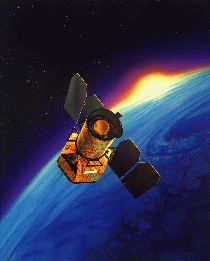What is GASS?
Galaxies are collections of hundreds of billions of stars formed out
of the gaseous matrix that permeated the early universe in the epoch
following the big bang. The exact process by which galaxies have
formed remains poorly understood, but astronomers are now performing
extremely large sky surveys of galaxies to obtain new insights into
how such structures in the universe formed and evolved over time.
In order to probe the relationship between stars and gas in galaxies,
GASS, the GALEX Arecibo SDSS Survey, links several new large galaxy
surveys in visible and ultraviolet light to observations from Arecibo,
the largest radio telescope in the world. The ground-based visible
and space-based ultraviolet surveys measure the young and old stars in
each galaxy, while the Arecibo survey that we are currently conducting
measures the gas content of each galaxy.
GASS targets the largest and most massive galaxies in the universe.
These giants very likely started forming when the universe was quite
young, but in the present day, appear to have stopped forming stars.
Has star formation stalled in these galaxies because the gas supply
has been fully consumed? Or has the gas been pushed to the outskirts
of these galaxies, or heated to temperatures that inhibit the
gravitational collapse needed to form new stars? GASS is designed to
answer these questions.
Barbara Catinella
Last modified: Sat Aug 9 12:34:47 CEST 2008







